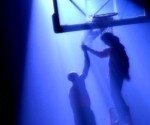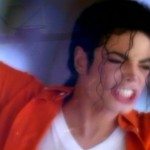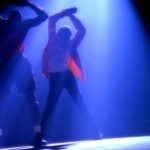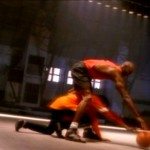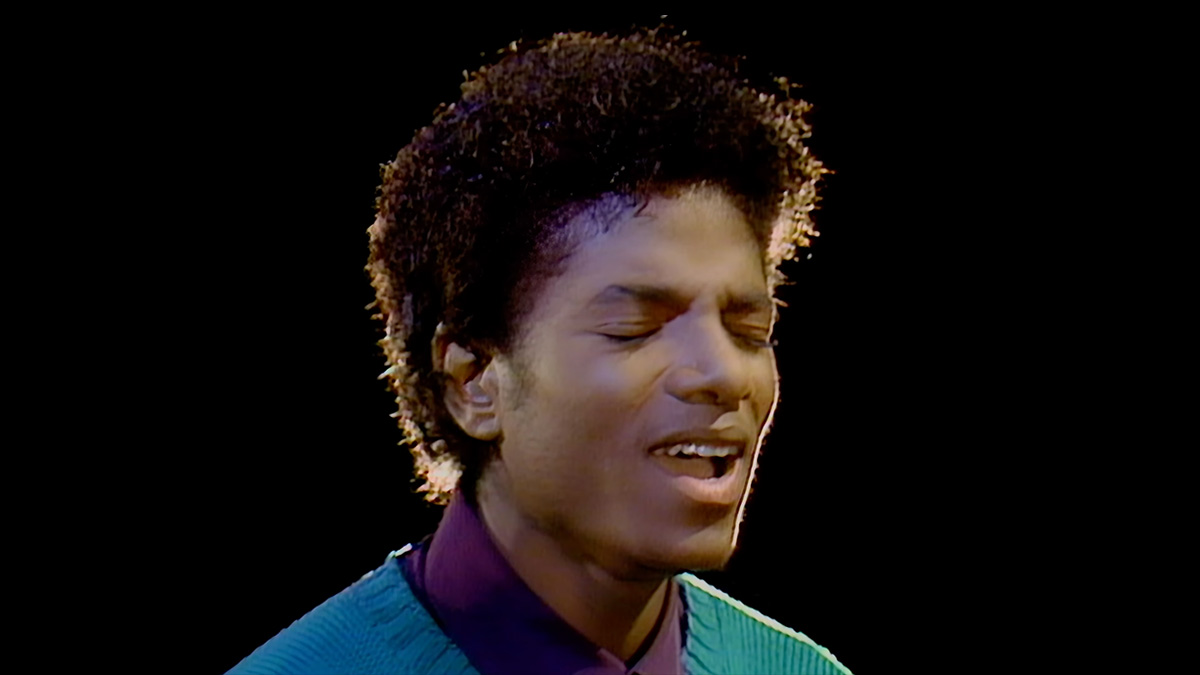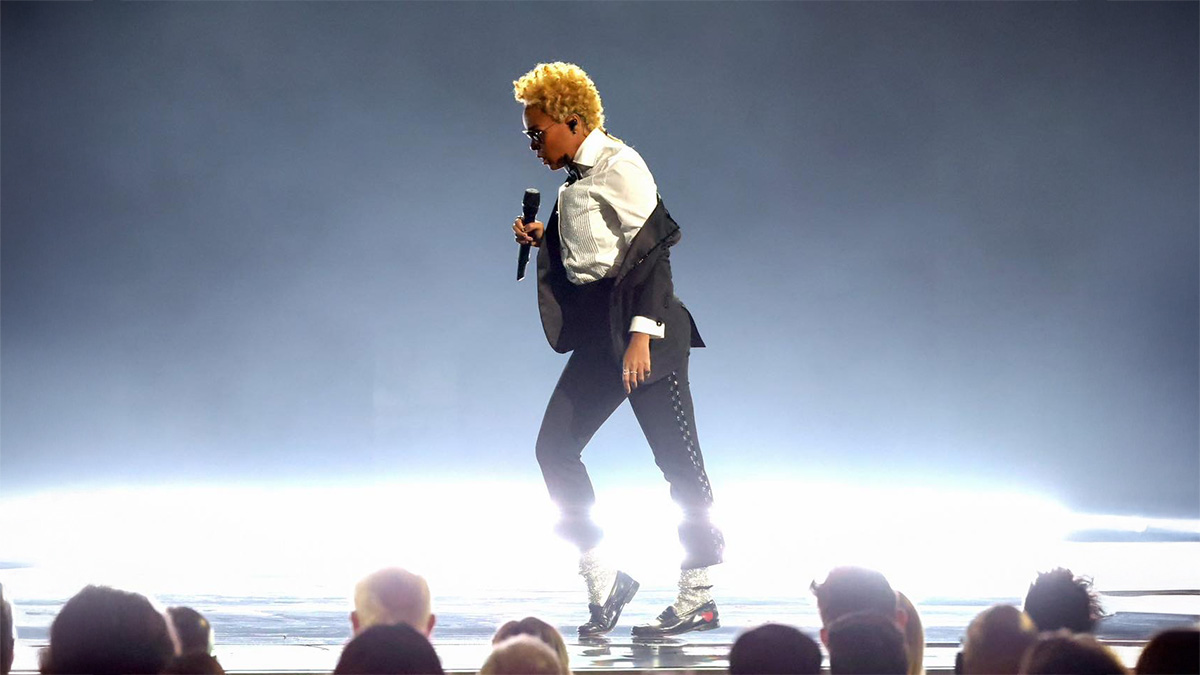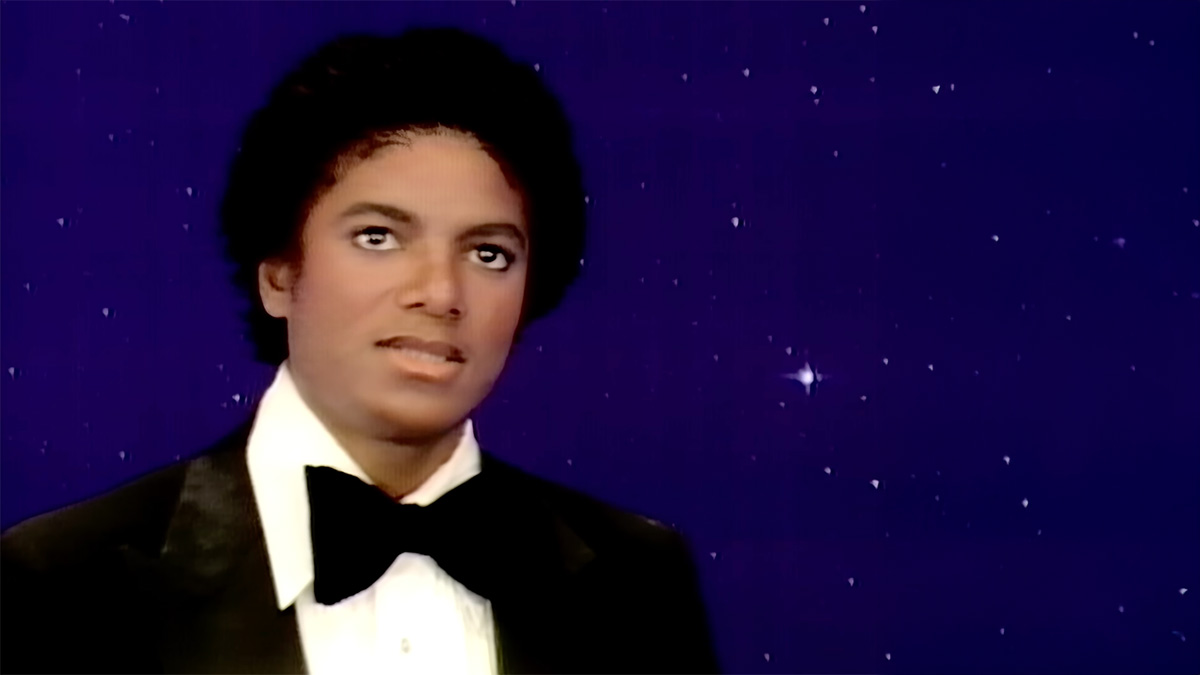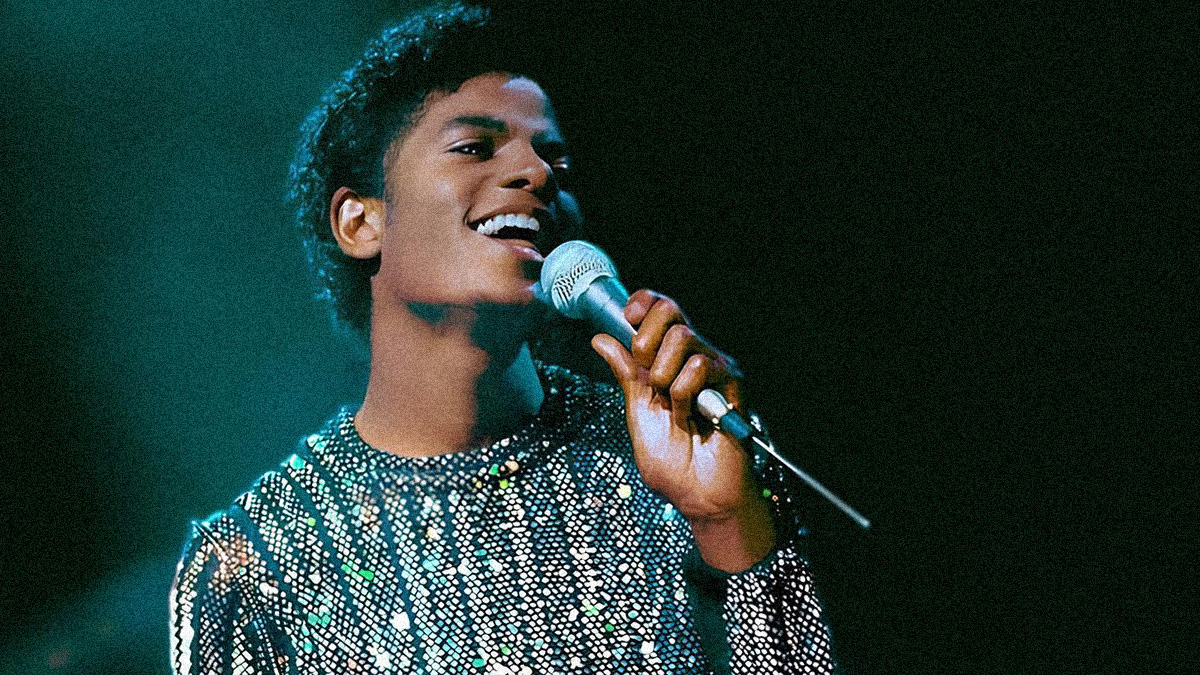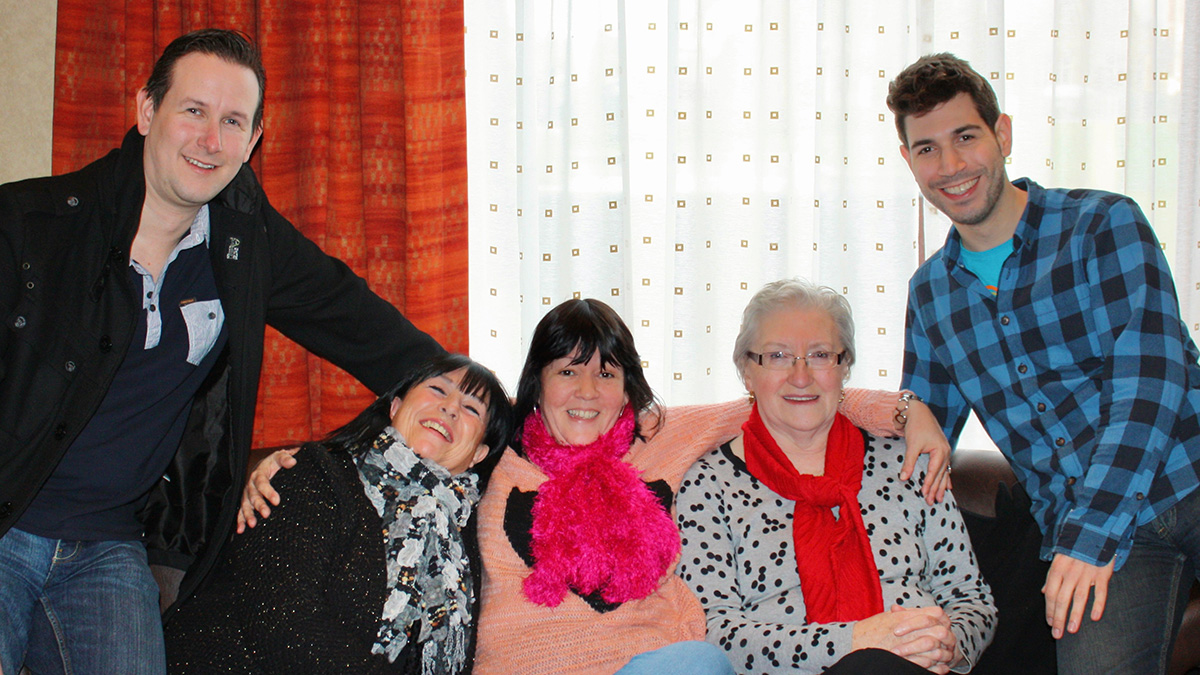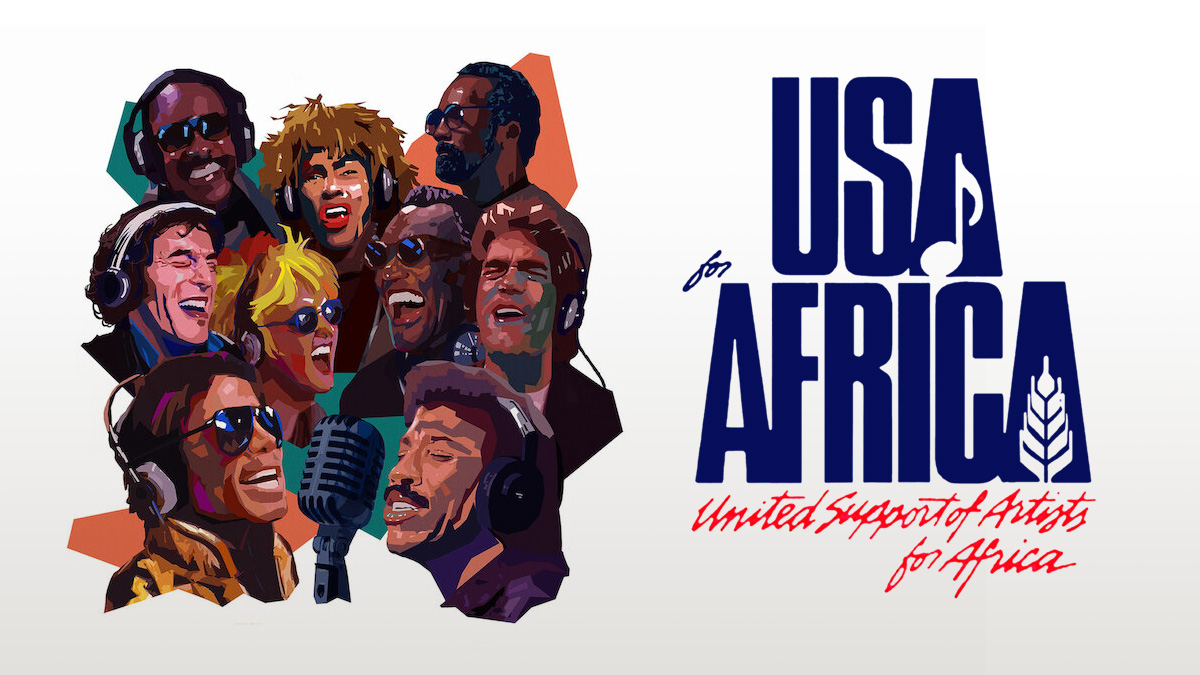Michael ‘Jams’ With Michael
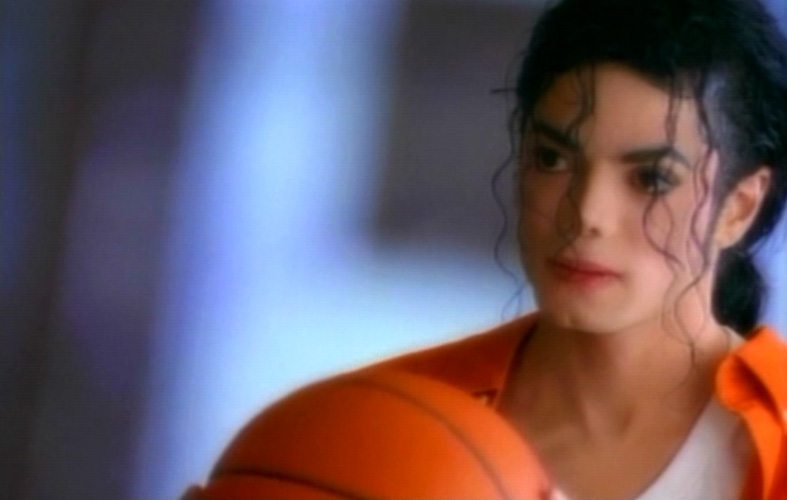
Last month, the world celebrated the legacy of Michael Jordan on his 50th birthday. But perhaps the coolest off-the-court thing he did in his career, back in the spring of 1992, was forgotten.
That’s when Jordan, the biggest athlete on the planet, collaborated with the biggest musical artist, Michael Jackson, for the video to his song ‘Jam.’ When it occurred, not only were music videos in their heyday, but also the entertainment world had never seen a cross-over interaction of that magnitude on a global scale. Plus, MJ and MJ had a special ring to it.
At the time, Jordan recalled: “First I said, ‘I don’t know if I want to do this, because this guy’s going to try to get me out there to dance, and that’s going to be really embarrassing.’ But then I said: ‘Well, shoot, it’s Michael Jackson. When would you ever get an opportunity to get to know him socially for a little bit, and yet at the same time, get to do his video?’ So I changed my mind and went on and did it.”
Twenty-one years later, ESPN Playbook has captured exclusively the many behind-the-scenes moments never shared before from Jordan and Michael’s first and only time working together. Here is ‘Jam’ director David Kellogg and producer Phil Rose, who are both still actively working together on commercials, with their vivid memories from the once-in-a-lifetime shoot, which also featured rappers Heavy D and Kris Kross.
The Planning:
Kellogg: Michael Jackson lined up Jordan, so we knew already that he was going to be in it. I think Michael (Jackson) talked to Jordan first. Jordan was harder to get. Michael Jackson is really about his music, so he’s always sort of available. He’s really into the videos. While he had a few events on the side, Jordan was certainly the hardest. We did it in Chicago just because of him.
Rose: Sandy Gallin, (Michael’s) manager at the time, was more involved with managing that. I know that Michael was a huge fan of Michael Jordan. When you’re at that level, if you want to work with someone that you’re a fan of, I’m sure it’s quite easy to work out.
Rose: I think originally it was Michael’s choreographer, (Travis Payne,) who was going to direct (‘Jam’,) but Michael was preparing for a world tour and (Payne) just got too crazy. And David came into the mix. The first conversations we had were on our way to the airport to discuss what we were going to do in Chicago. ‘Jam’ was our first project together, but I had done others for Michael. I did a song called ‘2300 Jackson Street,’ and it was the entire Jackson family, which was interesting, and then I did one in Germany with him and Slash, after ‘Jam.’
(MJWN notes that this short film was ‘Give Into Me,’ from the ‘Dangerous’ Album.)
Kellogg: That was my first Michael Jackson music video. At that time, I had done music videos for Lionel Richie, Dave Matthews, a lot of Quincy Jones, David Crosby.
Rose: Once the concept was worked out (for ‘Jam,’) then they hired me to meet with the initial director, and then budget and schedule and start the process of where we were going to shoot, which was going to be in L.A. on a sound stage. The budget was sizable for the time. It was smaller (than) the (usual) budgets that Michael was doing at the time, but it was still sizable — over $1 million. I was working at Propaganda Films at the time, and then I just segued right into working with David and we moved the idea to Chicago. It was because of Jordan’s schedule; he was playing at the time. The L.A. riots were also going on (in late April/early May.)
Rose: It was one of those kind of you land and you just grind your way through it. I mean, we didn’t have any locations that we locked down. I think we literally arrived on Thursday, and we were scheduled to start shooting the following Thursday. And in that time, we had to find a location, secure it and then, of course, build this basketball floor and court, and then cast for a bunch of vignettes. So it was literally a run-and-gun thing.
We started looking into what was available in the city, and there was something that was close to where the Bulls were playing at the time. I think it was the South Side of Chicago. It was pretty depressed, so there weren’t many industrial warehouses there that had a ceiling high enough. Then we noticed that there was this bombed-out old armory, and we just came in and had a look around, and it was perfect. It has a huge open space I guess for drilling at one point. It was a dump and the production designer, Rob Pearson, put in a full-sized basketball court. I mean, it was surreal to just be in this sort of completely old building and have this gorgeous basketball floor set up there.
Kellogg: We had endless money really. It was kind of whatever we needed to do. It was pretty big what we built because we went into sort of an empty warehouse or old factory, and it was bad. It wasn’t in a particularly good neighborhood, and it was really messed up. I didn’t know what was going on in there, but it was just a mess. The floor was really bad and it was really dirty.
Rose: I had to meet with the local police chief and everything else without revealing who was in the video, so we portrayed it as a Hellmann’s mayonnaise commercial, so we wouldn’t draw any attention to ourselves. The call sheet itself, we kept [the actual video details] off there; we kept it off of the crew lists. Anything that had any kind of printed material on it was basically listed as a mayonnaise commercial. With any typical shoot or making a commercial, you don’t really advertise it, but you do have street signs up directing equipment and crew.
The Arrivals:
Rose: When Michael Jackson arrived (to the set,) he was very secretive. His bus pulls in and then it’s tented between the bus and the building. The whole walkway is hidden. No one ever could see him. The police chief was just like, “I can’t believe you didn’t tell me it was Michael Jackson. This is crazy. We’ve got to get more police here. This could be a riot.” I was like, “OK, I’m sorry, I’m sorry.”
Michael was on the set probably about a couple of hours, and then Michael Jordan pulled in. And he just pulled in driving his BMW. He just drove up to the set and parked, got out. The police chief just looked at me like, “Are you kidding me?” (laughs) I said, “Well, it’s actually Michael Jordan and Michael Jackson together.” And he’s like, “Oh my god.” So they beefed up security. I think there was more security buzzing about Michael Jordan than they were about Michael Jackson.
Kellogg: I knew going in that these guys are really interesting physical performers. We knew we were going to have them both cross over into each other’s world. A lot of times in music videos, you just start playing the music and people kind of start doing something. At the very basic level, it was Michael Jordan teaching Michael Jackson how to play basketball, and Michael Jackson teaching Michael Jordan how to dance. It was never scripted. They played basketball first. We would just play the music and throw a basketball out there, and let them play and sort of see what happens. Then I think we said to Michael Jackson, “Well, show him how to moonwalk.” The music was playing at that point, so we didn’t record sound. Honestly, we went back in and we sort of looped Michael Jordan’s voice to that [scene] using the guy from Michael Jordan’s cartoon. It was done like two weeks later. It was kind of cheesy that we did that (laughs.) Michael Jackson did his part.
Rose: There was a lot of improvisation, especially when you’re working with two people like that whose schedules are what they are. Michael’s strength is performance, of course, and the other Michael’s strength is sports. Jordan was a bit clumsy dancing, I have to say, and I would say Michael’s jump shot was probably as weak as Jordan’s dancing (laughs.) So it was really just about capturing moments between them and then using the footage we gathered.
It felt very natural. I mean, it really was kind of more documentary filmmaking than composed filmmaking. I was on set every minute and it was so surreal. In our business sometimes — David and I joke about it — when you’re filming a stunt or an explosion, I always say to David, “Look at it real because you can always look at the replay later.” But when you’re working with two stars like that, it’s like every minute is real. You’re just starstruck.
Kellogg: Michael Jackson and his team were really concerned about lighting. There was no secret about that. There were no rules with the two of them together, but it was only when Michael performed that they cared a lot about the lighting. They really didn’t like any side lighting because I think he felt that his face was really angular and the shadow he didn’t really like. He didn’t like light coming from the side and having a shadow on one side of his face. He preferred a silhouette or straight-front lighting and pretty soft, so behind the camera there would just be sort of a wall of light.
In a way, it was sort of beauty lighting like you would do in a makeup commercial. He was really particular about that. He had a stand-in that we would use to kind of line up everything and the light before Michael would come out. That was the time when he was wearing that sort of surgical mask a lot. But I thought he looked great. He sort of got a bad rep about that.
Rose: One thing that made (the video) a little bit more expensive, because it could’ve been done cheaper, is we had to light for every single option. In other words, in a traditional film set, say you’re shooting some scene in a room, you would shoot one actor and then you’d shoot the other actor and you would re-light. But because we had limited time with both Michaels, we lit that entire armory with any kind of option that we might want. That was one of the reasons the budget was a little more than it would normally be.
Kellogg: Because we went in and did it as a mayonnaise commercial, no one really bothered us. People were kind of wondering what was going in and out. Eventually, big cars were parked there and motor homes. Michael Jackson was really good. There was a crowd of people outside and he would go to the window every now and then and say hello. I think the people were, honestly, a little more excited with Michael Jordan, probably because it was his hometown.
Rose: There was no press on hand (except for NBA Entertainment) because we had buried (the video) so deep as being what it wasn’t. I mean, the police were pretty mad that we didn’t let them know in advance, but I kind of felt like that was the better choice. Towards the end, there started to be a lot of crowds gathering. The police presence increased, but it was towards the end of our last shoot day, so we managed to just sort of squeak under the wire.
The ‘Jam’ filmmakers remember Michael as friendly and fun!
The Personalities:
Kellogg: They’re both really good people and easy to work with. I think they really did like each other, and you could see that. Michael Jordan was a really good sport about it because he had the most to embarrass himself. Michael is a kid, and he brought water balloons, Super Soakers and remote-control cars to the set. Michael was playful with Jordan, and he was happy running around with a basketball. He didn’t have particularly good form or anything. It was fun to watch them. It was interesting in that they’re two really good performers. Michael Jackson is just a bad basketball player and Michael Jordan just couldn’t catch up with Michael Jackson with the dancing. It was fun to sort of see that like, “Wow, they can control their bodies in completely different ways.”
Rose: There was not a lot to do without Michael (Jackson.) When Jordan was on the set, it’s interesting because Michael Jackson is more sort of quiet and introverted and retreats to his trailer, and Michael Jordan was completely happy to stay on the court and shoot some hoops. Then there were some kids we had come in. I don’t think we revealed to them who they were going to play, so it was like a starstruck dream come true for them to come in and see this kind of surreal basketball court in the middle of this armory. (Jordan) was great. He was definitely cool. He was not this sort of standoffish type person at all. He was really warm and friendly.
Kellogg: We had Jordan for about three days, and one day he knew he would be only there for two hours. I just remember him looking over his shoulder to me and sort of tapping his finger to his wrist like he was pointing to his watch. He knew what time it was and he knew that we were the kind of people that would just drag this thing on. He had done enough shoots at that point that he knew. I think his attention is about as long as a game. It’s sort of hard to keep him around. We were a little bit worried that we would lose Michael Jordan. Sometimes you do little things to keep (celebrities) around, and I believe we got him one of those golf driving ranges, like an arcade game, to keep him interested.
Rose: Michael (Jackson) worked in a very particular way, so a lot of my dealings were never directly with him because he is so secretive. He’s so gentle about being within himself that his people were the middlemen between us all the time.
Lunch with the president — a good reason to miss work.
A classic example of Michael’s way of working is on one of our shoot days, I called to say, “Michael, we need you on the set,” and his people said, “Well, he won’t be there until later.” And I said, “Oh, OK, well we can probably fill the morning with some work, but what time do you think he’ll be here?” And so they said, “Well, he’ll probably be there in a couple of days.” I said, “Wait, we’re in Chicago. He was here just yesterday. What happened?” They said, “He had a lunch appointment.” And I said, “Oh, OK, can he cancel it because (the video setup is) expensive?” And they said, “Oh, it’s with the President.” (George Bush at the time.) So I was like, “Oh, OK (laughs.)” His schedule is a lot more out of my realm. We shut down just for Michael to have that lunch, and we went back to L.A. until he returned to Chicago.
Kellogg: I remember Michael Jackson was kind of sick. I don’t know if he had the flu or what during this. Michael Jackson would sort of sit in the corner. We would set up a shot and he looked bad, like not healthy. But as soon as you put the music on, he would step up. To be 12 feet away from that, it’s pretty awesome to see him. It was really inspirational. I think that the crew and everybody else were like, “How can he pull it together so much and be so energetic and so sharp?” It was pretty amazing. That’s kind of like chills up your spine kind of stuff.
That’s probably one of my biggest takeaways from the whole shoot like, “Is that just adrenaline? Where does that come from?” It made me think a lot about clutch performances, like in a sports way. We didn’t really push Michael Jordan. He was in the middle of the season and we sort of didn’t want to mess that up. I had done other commercials with athletes and when you kind of work them during the day, and then they go and play at night, sometimes they don’t play so well, and I feel really like personally responsible.
The Reception:
Kellogg: In hindsight, it was actually a very special video to work on, and I think people liked it. Music videos are kind of dying form of art now, but it was an era back then. We had a lot of creative freedom.
Rose: I think people genuinely liked it a lot because it was a departure from Michael Jordan, because he’s this sports figure and I didn’t know if he had done that before. I also think that David had a really unique way of editing, where he has like these moments that would just pop up, so I think overall it was really fresh for the time.
When MTV first came out, it was the only place to go and see music. Now, you can go anywhere and see it. I’ve done music videos, commercials, TV shows and movies, and I can say the most creative freedom I ever had was in a music video, like (‘Jam.’) You’re given a small amount of money and you can go off and do what you do. It just seems to be there’s a lot of creativity there, and sometimes adding more money to it doesn’t necessarily make it more creative.
The Lasting Memory:
Kellogg: It has nothing to do with directing, but it was the moments where they came together and you try to get that on film. That’s challenging to bring people together like that. I really didn’t know what kind of relationship they had. It was possible that they had never met before. Both of them were sort of at their best, and that’s the kind of stuff I didn’t really think about. If I could do it again, I probably would have tried to capture that moment. That was what the video was kind of about, and I kind of missed it in a way.
Rose: Not really a specific conversation, but more so just in terms of Jordan. It was just the way he was. He’s just kind of like such an approachable, likable guy. I did tell him once, “We will be ready for you in 10 minutes,” and he said, “I can’t take a s— in 10 minutes (laughs.)” I think it was just his sense of being completely authentic. I was just blown away with someone who has that kind of fame, who just deals with it as just a regular guy.
Source: espn.go.com & MJWN
 Est. 1998
Est. 1998
